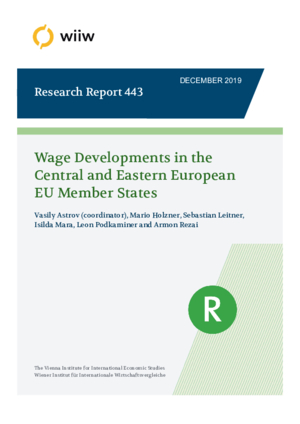Wage Developments in the Central and Eastern European EU Member States
Vasily Astrov, Mario Holzner, Sebastian Leitner, Isilda Mara, Leon Podkaminer and Armon Rezai
wiiw Research Report No. 443, December 2019
56 pages including 16 Tables and 26 Figures
Labour markets in the Central and Eastern European member states of the EU (EU-CEE8) have improved significantly since the global economic crisis of 2008-2009. Unemployment rates have declined steadily, primarily due to adverse demographic trends and massive outward migration to the West, which have resulted in a decline in the working-age population. Nevertheless, until recently wage growth in EU-CEE8 was rather restrained, resulting in generally stable wage shares. The so-called ‘Phillips curve’, which represents a negative correlation between unemployment and wage growth, has not held for most of EU CEE8 during this period – unlike, for example, for Austria or Germany. The main reasons for this have been the progressive flexibilisation and liberalisation of the labour markets of EU CEE countries in the years since the economic crisis. In particular, wage negotiation mechanisms have been decentralised and the degree of coverage by collective-bargaining agreements has declined, in some cases dramatically. This has tended to weaken the negotiating position of employees, thereby counteracting the positive effects of the general improvement in the labour market situation.
Disclaimer:
The study was commissioned by the Arbeiterkammer Wien.
Keywords: wages, wage share, demographic trends, migration, Phillips curve, wage-setting mechanisms
JEL classification: J11, J31, J4, J50
Countries covered: EU-CEE
Research Areas: Labour, Migration and Income Distribution
